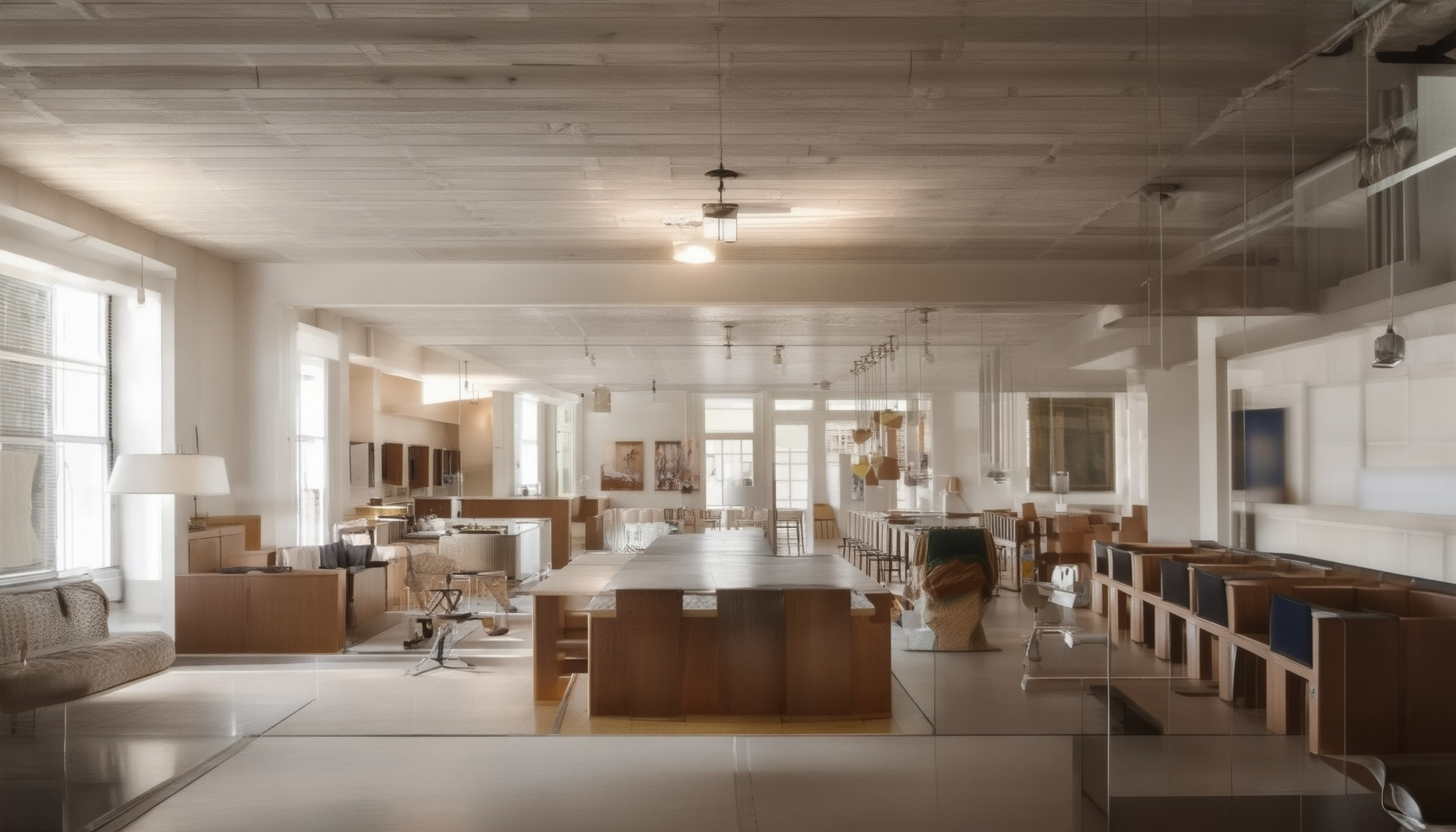In today’s fast-paced world, the concept of multifunctional room designs has gained significant traction as homeowners and businesses seek innovative ways to optimize space usage. These versatile spaces are no longer confined to traditional roles; instead, they adapt to multiple functions, blending form and functionality seamlessly. Whether it’s a home office that doubles as a guest room or a commercial space designed to serve various purposes, the idea of a multifunctional room offers endless possibilities. From maximizing efficiency in compact living areas to creating adaptable environments for diverse needs, this approach to interior design is revolutionizing how we think about space utilization. This article delves into the intricacies of multifunctional room design, exploring its benefits, challenges, and creative implementations across different settings. By examining everything from flexible furniture solutions to smart design strategies, we aim to provide valuable insights for those looking to transform underutilized spaces into dynamic hubs of activity. Let’s uncover how multifunctional rooms are redefining modern living and workspace dynamics.

What is a Multifunctional Room?
A multifunctional room is a versatile space designed to serve multiple purposes within a single area. These rooms are designed to adapt to various activities, saving space and maximizing functionality. Common examples include living areas that double as home offices, dining rooms that also function as casual lounges, or kitchens that incorporate dining spaces.
Types of Multifunctional Rooms
- Living Areas :
Modern living rooms often incorporate multifunctional design elements. For example, a sectional sofa might fold into a bed, allowing the space to serve as both a living room and guest bedroom. Some designs feature built-in storage or Murphy beds for added flexibility. - Home Offices :
A multifunctional home office might include a desk, bookshelves, and a small workspace for hobbies or crafting. This setup allows for efficient use of space while maintaining a dedicated area for productivity. - Entertainment Spaces :
Many families opt for multifunctional entertainment rooms that combine a television, gaming console, and seating area. Some designs integrate a kitchenette or bar, making them ideal for hosting or casual gatherings. - Dining Areas :
In smaller homes, dining areas often double as additional seating spaces. A extendable table or bench seating can transform the area into a casual lounge during non-meal times.
Benefits of Multifunctional Rooms
- Space Efficiency : Maximizes the use of available space, making it ideal for smaller homes or apartments.
- Versatility : Can adapt to changing needs, accommodating different activities throughout the day.
- Cost-Effective : Reduces the need for multiple dedicated rooms, lowering overall remodeling costs.
By thoughtfully designing multifunctional rooms, homeowners can create a more adaptable and enjoyable living environment tailored to their unique needs.
How to Create a Multifunctional Spare Room
To transform a spare room into a multifunctional space, consider the following steps:
- Define the Primary Functions:** Choose what the room will primarily be used for, such as guest accommodation, a home office, a hobby space, or a relaxation area.
- Optimize Space:** Use space-saving furniture like a Murphy bed or a futon that doubles as seating. This maximizes versatility while minimizing footprint.
- Add Versatile Storage:** Install wall-mounted shelves, drawer units, or cabinets to store items when not in use. Under-bed storage boxes are ideal for seasonal clothing or extra bedding.
- Choose Multi-Purpose Furniture:** Select pieces like a sofa bed, coffee table with hidden storage, or an ottoman with internal compartments for additional storage.
- Integrate Technology:** Add a lamp with a built-in USB port for charging devices and consider task lighting options for reading or working.
- Use Modular Furniture:** Invest in furniture that can be rearranged, such as a foldable desk or a TV stand with open shelves for books and decor.
- Curate Color and Decor:** Opt for soft, neutral colors on the walls and choose patterned or textured accents for curtains and throw pillows to enhance flexibility and style.
- Ensure Functionality:** Include a small desk or table for workspace and utilize cable management solutions to keep cords organized.
- Add Personal Touches:** Incorporate personal items like plants, artwork, or decorative trays to personalize the space while maintaining functionality.
By thoughtfully combining these elements, you can create a versatile and functional spare room that adapts to various activities, ensuring it remains a valuable addition to your home.

What is a Multi-Purpose Room?
A Multi-Purpose Room (MPR) is a versatile space designed to accommodate a variety of activities. Often found in modern homes, these rooms are designed to serve multiple functions, making them a practical solution for families or individuals with limited space. Common uses include entertaining guests, working from home, and hosting family gatherings.
Common Uses of a Multi-Purpose Room
- Entertaining: Ideal for hosting parties, dinners, or casual get-togethers.
- Working: Can double as a home office or study space.
- Family Time: Perfect for movie nights, game nights, or simply relaxing together.
Design Considerations for a Multi-Purpose Room
- Opt for modular furniture that can be easily rearranged.
- Choose a flexible layout that allows for different configurations.
- Use versatile decor such as neutral colors and interchangeable accents.
Benefits of a Multi-Purpose Room
- Saves valuable space in smaller homes.
- Reduces the need for multiple dedicated rooms.
- Acts as a central hub for socializing and relaxation.
By thoughtfully designing and utilizing a Multi-Purpose Room, you can maximize your home’s functionality and create a space that adapts to your lifestyle.

What is a Multipurpose Room in a Hospital?
A multipurpose room in a hospital is a versatile space designed to accommodate a variety of medical procedures, treatments, or activities. These rooms are highly adaptable and can be configured for different uses, making them essential in healthcare facilities where flexibility is crucial.
Key Features and Functions:
- Adaptability : These rooms can be quickly transformed to suit diverse needs, whether it’s a minor surgery, physical therapy session, or temporary isolation space.
- Medical Equipment : Equipped with movable or adjustable tools, these rooms can handle a range of procedures without requiring patients to be relocated.
- Infection Control : Designed with features like antimicrobial surfaces and controlled lighting to minimize infection risks.
Benefits:
- Efficiency : Reduces the need for transferring patients between areas, streamlining operations.
- Cost-Effectiveness : Optimizes space usage and minimizes the need for dedicated rooms for rare procedures.
- Patient-Centric Care : Ensures timely service delivery, enhancing overall care quality.
Why It Matters:
Having a multipurpose room helps hospitals manage space efficiently, cut costs, and deliver immediate care, ultimately benefiting both patients and staff.
For more insights on optimizing hospital layouts, explore Peck and Gartner’s guide on modern healthcare environments.
What is the Purpose of a Multipurpose Room?
A multipurpose room is designed to serve various functions within a space, offering flexibility and adaptability to meet different needs. Its primary purpose is to create a versatile environment that can accommodate diverse activities, from team meetings to individual work sessions, social gatherings, or even small-scale events.
- Versatility: A multipurpose room is built to adapt quickly to changing requirements, allowing it to transition smoothly between different uses. Whether it’s hosting a presentation, a casual meeting, or a collaborative brainstorming session, the room can be reconfigured to suit the task at hand.
- Cost-Effectiveness: By consolidating multiple purposes into a single space, organizations can save on the need for separate rooms, reducing costs associated with additional facilities.
- Collaboration: These rooms often encourage interaction and teamwork, as they allow individuals to move freely between work areas without the constraints of traditional office layouts.
- Efficiency: A multipurpose room minimizes downtime by enabling seamless transitions between activities, making it ideal for environments where time is a precious resource.
Additionally, these rooms are increasingly being designed with technology that supports remote work, such as video conferencing equipment and adjustable partitions that can create private workspaces. This trend reflects the growing demand for flexible work environments that cater to both in-person and virtual interactions.
In summary, the purpose of a multipurpose room lies in its ability to enhance productivity, foster collaboration, and adapt to evolving workplace needs, making it a valuable asset in modern office designs.

Another Name for a Multipurpose Room
A multipurpose room is often referred to by several names, each highlighting its versatility. One common alternative is the multi-use room . This term emphasizes the space’s ability to serve multiple functions, making it adaptable to varying needs. Additionally, a convertible room is another descriptor, suggesting that the room can easily transition between different uses. The term versatile room also captures the essence of adaptability, showcasing the room’s flexibility. Lastly, a multi-function room underscores its capability to handle multiple tasks simultaneously.
This variety of names allows for customization depending on the specific use case, making it easier to identify the space based on its primary function or intended purpose.





0 Comments